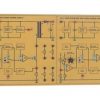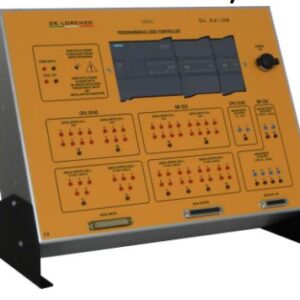Objectives:
Training of an engineer for the installation and maintenance of Local Networks, capable of:
– knowing the principles, the standards and the devices that are normally used in LANs
– installing LANs and Intranet in compliance with the current cabling standards
– installing the protocols and presetting the configurations on the network computers
– performing maintenance, troubleshooting and tests on LANs
Educational Path:
The Educational Path of the Training Package covers the following subjects:
– Introduction to local networks
What is a local network, Components of a local network, The transmission media, The structured wiring, Network topologies, Network protocols: OSI Model, Technologies and standards for the local networks, Network devices, Network operating systems.
– Signal coding and transmission media
Coding techniques, The transmission media, The coaxial cable, The telephone wire, The optical fibres.
– The OSI model and the protocols LAN IEEE
The OSI reference model, OSI Model: Physical Level and Line Level, The project IEEE 802: Sublevel LLC, Sublevel MAC and Physical Level.
– Networks: Ethernet, Fast Ethernet and Gigabit Ethernet
Standard Ethernet and IEEE 802.3, The sublevel MAC, CSMA‐CD access method, the physical level, Ethernet: 10 Mbps (10 Base‐T), Fast Ethernet: 100 Mbps, Gigabit Ethernet: 1000 Mbps
– Network devices
The typical devices of an Ethernet networks, Transceivers, Repeaters, Media converters, Hubs, Switches.
– Structured wiring according to standard EIA/TIA 568A ‐ ISO/IEC11801
What is the structured wiring, The wiring standards, Content and purpose of the standards, Topology of a structured wiring, Main elements and nomenclature, Horizontal wiring, Dorsal networks.
– Protocols: NetBIOS, NetBEUI, TCP/IP, IPX/SPX
The protocols of level 3, 4, 5, 6, 7, The interface NetBIOS, The protocol NetBEUI Netware protocols: IPX/SPX, IPX protocol, SPX protocol, Internet protocols: TCP/IP, IP protocol, TCP protocol. – Intranet and diagnostics on the networks
What is an Intranet, Terminal emulation, Files transfer, Electronic Mail, World Wide Web, TCP/IP tools.
– Architecture of a Peer‐to‐Peer network Operating System
General architecture, Redirector and File System, Support of multiple networks, NDIS architecture, TCP/IP architecture, Client and Server Peer architecture, Programming interfaces, Architecture and serial communications.
– Architecture of a network Server Operating System
General architecture, NDIS specifications, Network protocols, Transport Driver Interface, Network services: Server, Network services: Workstation, Service DHCP, DNS and WINS.
- ABOUT US
- Distributors
- KRAFTPOWERCON
- BIOPAC
- BOXFORD
- CISAM – ERNST
- CLEVER SCIENTIFIC
- DELORENZO
- Automation
- Industry 4.0
- Electronics
- Renewable Energies and Smart Grid
- Electrical installations
- Home Automation
- Electric Machines
- Telecommunications
- Power Electronics
- Electrical Power Engineering
- Autotronics
- Thermotronics
- Fluid mechanics
- Industrial plants and food technology
- Secondary Education
- Disabled People
- HANBACK ELECTRONICS
- Comet Yxlon
- PAXIT
- MEIJI TECHNO
- RODWELL
- Application
- News
- Library
- Contact Us


















